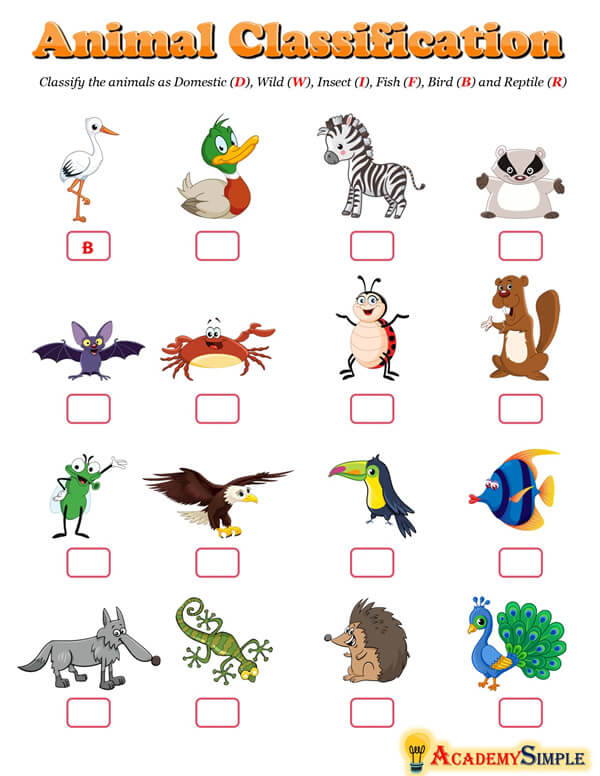Physical Address
304 North Cardinal St.
Dorchester Center, MA 02124

Global Blog Planet

Global Blog Planet


In the realm of biology and zoology, the classification of animals Worksheets serves as the cornerstone of understanding the diverse spectrum of living organisms that inhabit our planet. From the tiniest microorganisms to the colossal creatures of the deep, every animal finds its place within the intricate web of taxonomic classification.
Taxonomy, the science of categorizing organisms based on shared characteristics, provides us with a systematic framework to study and comprehend the rich biodiversity present in nature. Through meticulous observation and analysis, taxonomists classify animals into distinct groups, facilitating easier identification and study.
At the broadest level, all living organisms are classified into five kingdoms: Animalia, Plantae, Fungi, Protista, and Moneran. Within the Animalia kingdom alone, a mesmerizing array of creatures exists, ranging from the simplest single-celled organisms to complex multicellular beings.
Within the Animalia kingdom, animals are further subdivided into various phyla, classes, orders, families, genera, and species, each representing a unique evolutionary lineage and set of characteristics. This hierarchical system allows scientists and researchers to organize and study animals based on their anatomical, physiological, and genetic attributes.
Among the numerous phyla that encompass the Animalia kingdom, some of the most prominent include Chordata, Arthropoda, Mollusca, and Annelida. Each phylum encompasses a diverse array of organisms, ranging from vertebrates with spinal cords to invertebrates with exoskeletons, showcasing the remarkable breadth of animal life on Earth.
Within each phylum, animals are further classified into classes based on shared characteristics and evolutionary relationships. For instance, within the Chordata phylum, classes range from jawless fish and cartilaginous fish to amphibians, reptiles, birds, and mammals, each exhibiting distinct adaptations and behaviors suited to their respective environments.
The classification of animals not only aids in organizing the vast diversity of life forms but also serves as a fundamental tool for scientific research, conservation efforts, and ecosystem management. By understanding the relationships between different species and their environments, researchers can unravel complex ecological dynamics and devise strategies for preserving biodiversity.
Beyond their scientific significance, animal classifications also play a pivotal role in education, providing students with a structured framework to comprehend the diversity of life forms on Earth. By studying the characteristics and relationships between different animal groups, budding biologists gain valuable insights into evolutionary processes,
Embracing the Future of Animal Classification
As we stand on the brink of a new era of discovery and exploration, the classification of animals continues to evolve, driven by advancements in technology, interdisciplinary collaboration, and a growing awareness of the importance of biodiversity conservation.